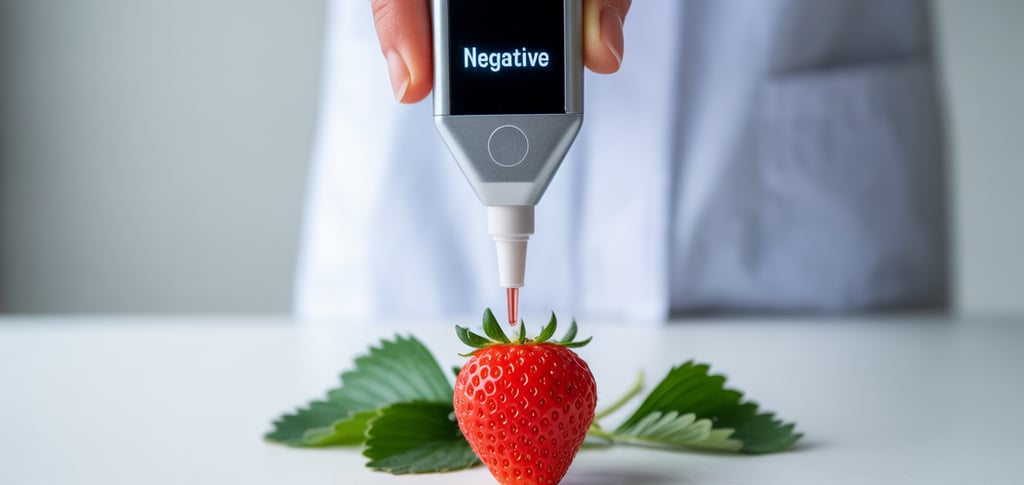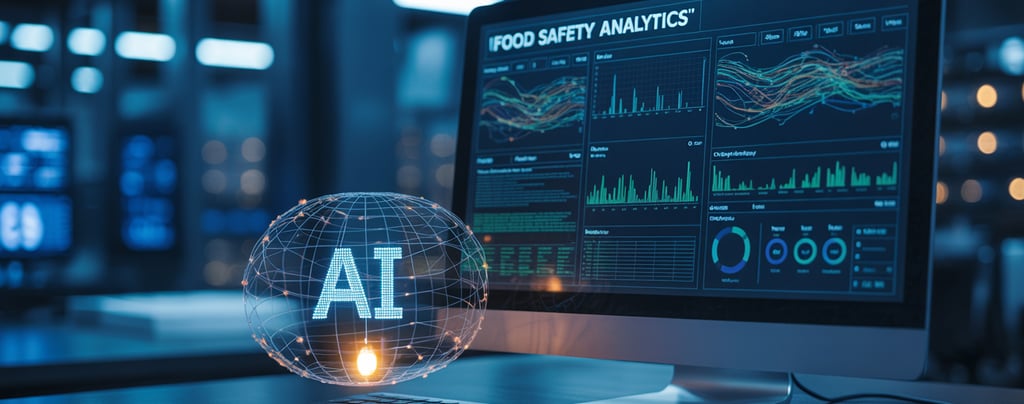How Technology Is Making Your Food Safer in 2025
In 2025, technology is transforming almost every aspect of our lives, including how we produce, handle, and consume food. People today are more conscious than ever about food safety - worrying about contamination, allergens, freshness, and authenticity. Fortunately, many emerging technologies are stepping in to make food safer, more transparent, and more reliable from farm to table. This post explores the key technologies driving this change and what they mean for consumers, businesses, and regulators.
9/23/20253 min read


1. Artificial Intelligence and Machine Learning: Predicting and Preventing Food Safety Risks
Artificial intelligence (AI) and machine learning have revolutionized food safety by enabling predictive analytics that identify risks before they become dangerous problems. By analysing huge datasets from farms, processing plants, retail stores, and consumer feedback, AI systems can detect patterns and anomalies that indicate potential contamination or spoilage.
For example, AI tools can analyse weather data, soil conditions, and crop health to predict outbreaks of pathogens like Listeria or Salmonella early. Food manufacturers use AI to monitor production lines using sensor data and video analytics to spot hygiene breaches or equipment malfunction. Retailers employ AI to track expiration dates and food quality in real-time, reducing waste and ensuring freshness. At the consumer end, smartphone apps powered by AI help shoppers identify safe food products and alert them to recalls or allergy risks.
For consumers interested in AI-driven smart kitchen gadgets, products like smart refrigerators that monitor food freshness and send alerts can be found on leading online stores.
2. Blockchain Technology: Ensuring Transparency and Traceability
Blockchain, the decentralized and secure digital ledger technology, is increasingly used in food supply chains to guarantee transparency and traceability. Each step of the food journey - from farm production, processing, packaging, shipping, to store shelves - is recorded in an immutable blockchain ledger accessible by producers, regulators, retailers, and even customers.
This means if a food safety issue arises, companies can quickly pinpoint which batch is affected and trace its entire history, enabling fast and precise recalls. Consumers can scan product QR codes to confirm origin, verify certifications, or check handling and storage details.
Several food brands and retailers now offer blockchain-verified products, reinforcing consumer trust. If you're curious about blockchain-enabled food products, check out marketplaces offering traceable organic and sustainable foods.
3. Rapid and Portable Testing Technologies: Detecting Contaminants Instantly
Traditional food safety testing has often been time-consuming and confined to labs. New rapid and portable pathogen detection technologies are changing that by allowing real-time, on-site testing for contaminants such as bacteria, viruses, toxins, and chemical residues.
Advances in biosensors, microfluidics, and molecular diagnostics mean farmers, processors, and inspectors can test water, soil, raw materials, and finished products within minutes. This accelerates decision-making and prevents contaminated food from reaching consumers.
Products like handheld pathogen detectors and smartphone-connected testing kits are increasingly available for commercial users and even advanced home users interested in kitchen food safety. (Affiliate Link: Discover rapid food testing kits and biosensors for your home or business.
4. Internet of Things (IoT): Smart Monitoring of Food Safety Conditions
The Internet of Things (IoT) connects physical devices to the internet, enabling automatic monitoring and controlling of environmental conditions critical to food safety. IoT devices such as temperature and humidity sensors, smart scales, and GPS trackers ensure food storage, transportation, and display conditions meet safety standards.
For example, cold chain management uses IoT sensors in trucks and storage facilities to continuously monitor temperature and changes during transport. Any deviation triggers automatic alerts to prevent spoilage. In retail, smart shelves and refrigerators track inventory and freshness, reducing waste and improving safety.
Consumers can now find smart kitchen gadgets that monitor food quality and storage conditions to help prevent foodborne illness at home.
5. Science-Based Consumer Education and Digital Campaigns
Technology also empowers science-based public education to boost awareness of food safety risks and best practices. Interactive websites, apps, webinars, virtual reality training, and engaging social media campaigns help consumers and workers learn key safety precautions.
Campaigns like World Food Safety Day 2025 use digital storytelling and data visualization to highlight global progress and challenges in food safety. These tools encourage responsible food handling, hygiene, and informed purchasing decisions.
Consumers can benefit from online courses and apps focused on food safety tips for home cooking and shopping.
Why Technology Matters More Than Ever
Food safety challenges continue to grow globally due to increased food production, climate change, complex supply chains, and rising demand for fresh and minimally processed foods. Technology provides tools to meet these challenges efficiently and transparently.
For consumers, food safety technology means:
Safer, fresher, and higher-quality food
More control and information about what they eat
Faster response to food recalls and safety issues
Greater confidence in food authenticity and sustainability
For businesses, these technologies enhance compliance, reduce waste, protect brand reputation, and build customer trust.
How to Stay Informed and Protected in 2025
Look for products with blockchain verified traceability
Use apps and devices that monitor food freshness at home
Stay updated on recalls and safety alerts via digital platforms
Embrace rapid testing tools and smart kitchen gadgets
Educate yourself with credible food safety resources online
Technology is reshaping the food landscape, ensuring our food is safer, more transparent, and traceable than ever before. Staying informed and embracing these innovations can help everyone enjoy healthier meals with peace of mind.
If you'd like assistance finding smart kitchen devices, rapid testing kits, or online courses, explore these carefully selected options:
Smart kitchen appliances to enhance food safety
Rapid food contaminant test kits for home and business
Online food safety training and courses for consumers


Join us on Pinterest
letstalk@lorybs.com
© 2025. All rights reserved.
